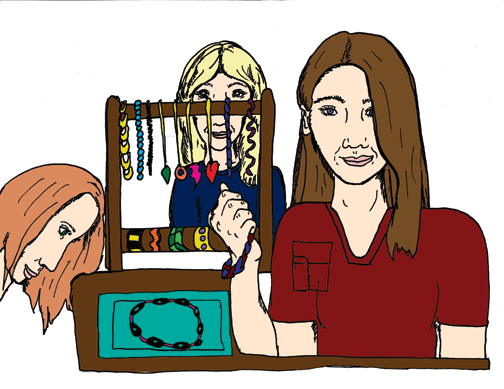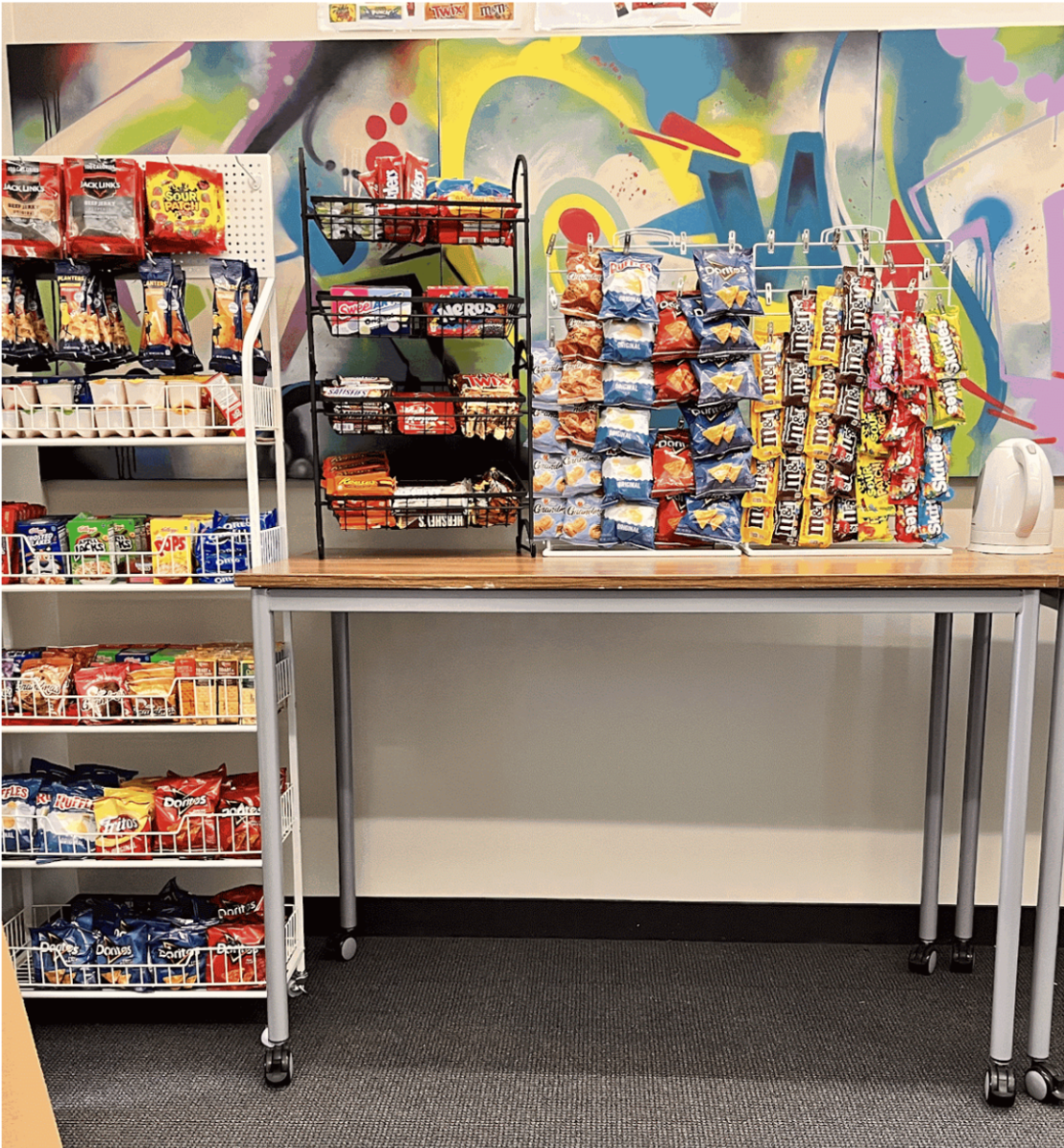

 Stationed on Market Street outside of the Westfield Shopping Center sits a Vietnam veteran who calls himself “Albert,” hammering spoons to form bracelets and twisting twine for necklaces.
Stationed on Market Street outside of the Westfield Shopping Center sits a Vietnam veteran who calls himself “Albert,” hammering spoons to form bracelets and twisting twine for necklaces.
Emma Herlihy
News Editor
Stationed on Market Street outside of the Westfield Shopping Center sits a Vietnam veteran who calls himself “Albert,” hammering spoons to form bracelets and twisting twine for necklaces.
While many people just pass by the makeshift stands sitting on what are arguably the dirtiest and busiest streets of San Francisco, the intricate bracelets and sparking necklaces hand-made by street vendors are what Albert considers a hidden treasure.
“Not many people understand the hard work of street vendors,” Albert said. “People think we are crazy but we are making real art and not getting much money for it.”
When passing them on the street, many of the vendors can be spotted working on a new pieces to sell at their stands, taking influence from the thousands of people who pass by the stands each day.
“Much of my work comes from the colors and people around me,” Albert said. “If I see a cool pattern I’ll add it into my designs. The people might ignore me, but they help me with my art just by accident.”
Although not what he considers a “traditional” job, Albert said he ignores the “rude comments and attacks from passerby” because selling his jewelry and handmade items on the street is an important creative outlet for him.
“I saw people [vending jewelry] and I thought it would be a good therapy for me,” Albert said. “I also meet some people who end up being returning customers and that really make me proud of my art. They enjoy it and that’s what I really like about doing all of this.”
Every city has its own predetermined cap of permits for street vendors, and the need usually exceeds this cap, so some people opt to illegally vend.
Having previously worked in the restaurant business, Ismael Morales picked up the skill of making beaded and string necklaces and bracelets from a friend.
“I lost my job and somebody taught me how to make these things,” Morales said. “I travel so much so when I saw others doing this I thought I could do it.”
For Morales, street vending is more enjoyable than working at a restaurant because it allows him to try new things and break away from the mold.
“I always try to create something interesting and that is unique among what the other vendors are selling,” Morales said. “I had to learn how to be more creative because it’s no use for me to make them if they are the same.”
The annual wage for street vendors is $26,320 with an hourly wage of $12.50 according to the Bureau of Labor Statistics.
Many vendors like Morales and Albert were unemployed before they started vending, which has given them both a job and a hobby.
“Making jewelry gave me something to do with my life,” Albert said. “I consider it a blessing that I found it and I don’t know where I would be without it.”
Despite the stigma attached to makeshift vendors selling on the street, both Morales and Albert stress that people should look beyond surface level to appreciate the art.
“We all have a unique story to tell through our jewelry,” Albert said. “You could laugh at us or you can actually stop and look at our craft. If you just pass by, you are missing out on our beautiful jewelry.”









